





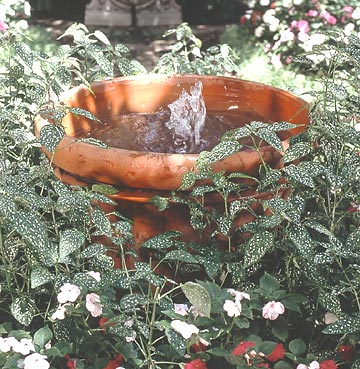
Use any large pot. Terra-cotta is particularly handsome. If the container does not have a drainage hole in the bottom, drill one (using a masonry bit) or drape the pump's electrical cord over the rim. Disguise the cord by guiding a few stems of one of the surrounding plants along the rim. Set the freestanding fountain in a garden bed or border that has an electrical outlet nearby; using an extension cord is not recommended. If you think you will have a problem with mosquitoes, add a few small goldfish, which will eat the larvae. The number of fish you can use -- probably not more than two or three -- will depend on the diameter and depth of the container.
continue reading below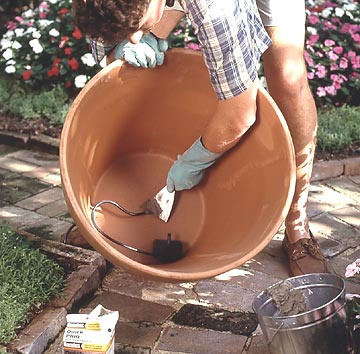
What You Need:
Zones: 3-11 Time: About 1 day
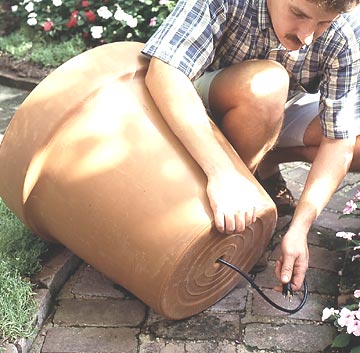
1. Set a submersible pump in the bottom of the container. Using a pot that is at least 24 inches in diameter makes a splash and requires less water refilling than a smaller pot. Pull the pump electrical cord through the drainage hole of the pot.

2. Pull out enough cord to be able to connect to the outlet -- don't plug it in -- and leave sufficient slack to raise the pump in the pot. Close the drainage hole with premixed, quick-drying cement. Let the cement dry thoroughly; follow directions on the package.
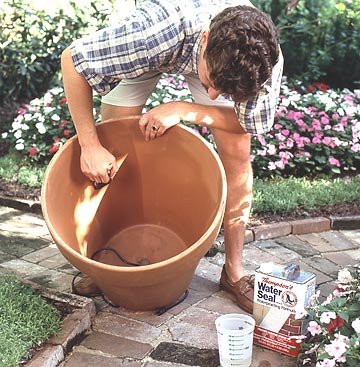
3. Seal the inside of the pot -- whether it's terra-cotta, wood, or some other porous material -- with a liquid water sealant that is labeled for use on wood. Let the sealant dry completely.
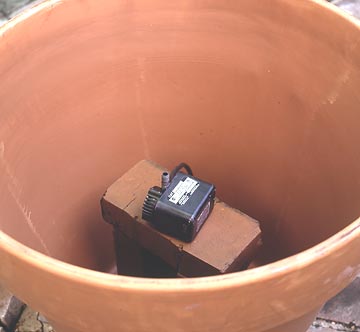
4. Elevate the pump in the center of the container. Place it on bricks to bring it a few inches below where the water's surface will be. Fill the pot with water and connect the pump to the GFCI outlet. Be sure the water level does not dip below the pump.
Copyright © www.100flowers.win Botanic Garden All Rights Reserved